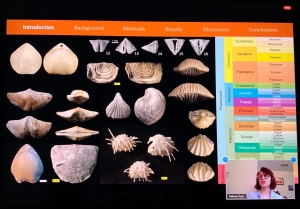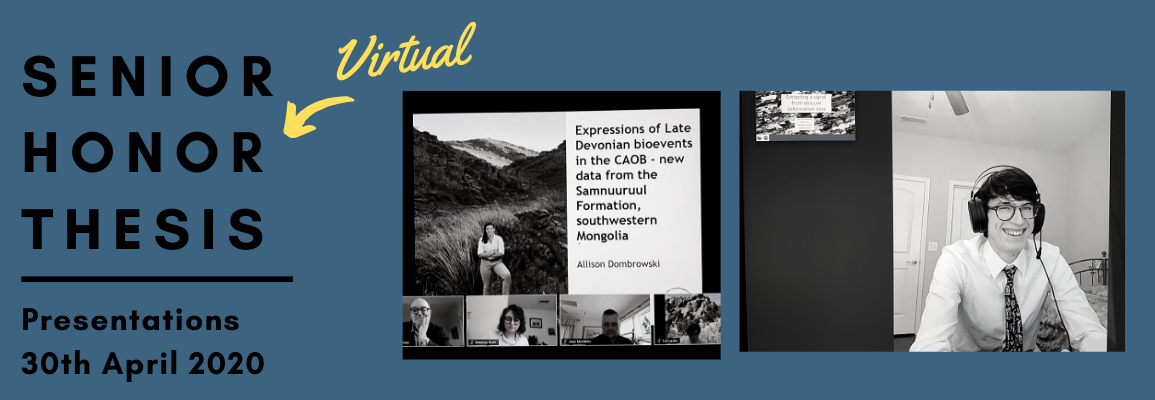We may not have been in the usual Rankin Science lecture hall, but it was a great day of Honors Thesis presentations. The virtual environment did not stop our 2020 honors seniors from giving very thorough, clear and engaging presentations on a variety of paleontology, hydrology, sedimentology and mineralogy topics. Shout out to Dr. Cole Edwards for coordinating the event and facilitating the sessions. Click the links below for videorecordings of the thesis presentations.
Matthias Eads kicked off the day with his presentation titled “Breaking the Mold: Evaluating the Resource Efficiency of Physical and Digital Fossil Replication Methods,” in which he shared his findings on different molding and casting techniques, including 3D printing as an alternative to traditional methods and its limitations. Matthias has been working with Dr. Heckert for the past few years perfecting the molding and casting process and producing hundreds of fossil casts. He hopes to publish his findings in the Journal of Paleontological Techniques or similar. The fossil casts that Matthias has produced during his research will be used for outreach and educational purposes now that his data collection has been completed.
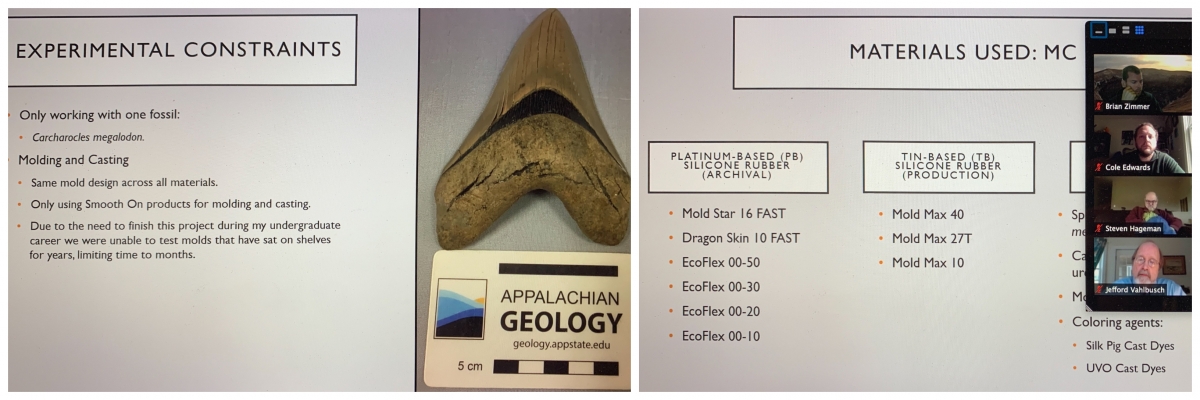
John Economou switched gears into the realm of mineralogy, with his talk titled “Extracting a Signal from obscure Deformation Data.” John outlined his work with Dr. Lavine and Dr. Casale on more efficient methods of modeling orientation of quartz grains to determine rock deformation (in much more technical terms!).

Ginny Brown followed with her research on “EBSD and Trace Element Analysis of Replacement Dolomite in the Latemar Platform in Italy.” Ginny worked with Dr. Carmichael looking into whether crystallographic orientation of replacement dolomite can provide evidence about the way dolomite replaced original calcite: whether the replacement was due to atom-by-atom replacement while the calcite remained solid, or if the calcite completely dissolved and then the dolomite precipitated from the solution.
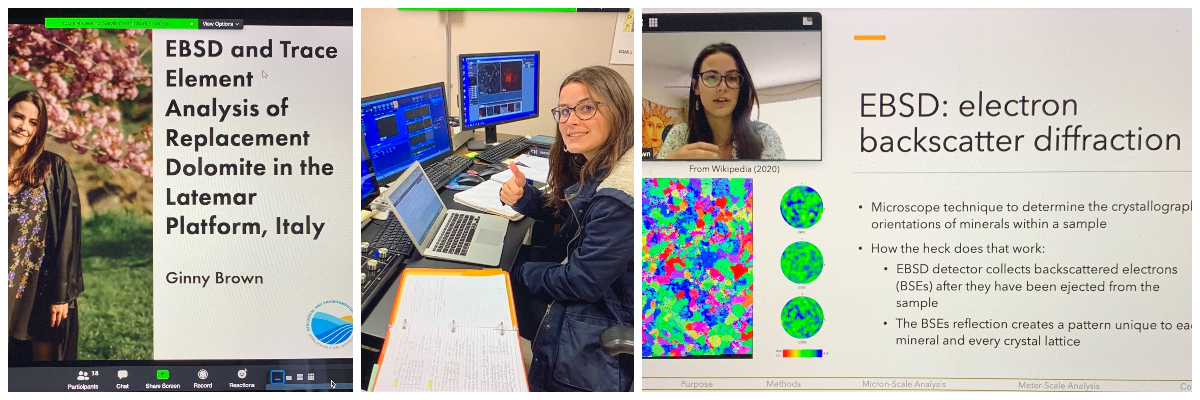
Hannah Field took the audience to Canada, where her research on glacial lakes with Dr. Armstrong took place. Her presentation, titled "Climatic, glaciologic, and geomorphic controls on northwestern North America proglacial lake area change between 1984 - 2018" looked at ice-marginal lakes, the factors that drive glacial lake change and their role in the environment.

After a break for lunch, Carly Maas started the afternoon with her presentation on “The Use of Intentional Wetlands to Mitigate Road-Salt Contamination in Urban Streams” based on her work collecting and analyzing Boone Creek hydrologic data. Carly has worked with Dr. Anderson for the past three and a half years modelling how accidental and intentional wetlands help reduce salinity in urban streams.
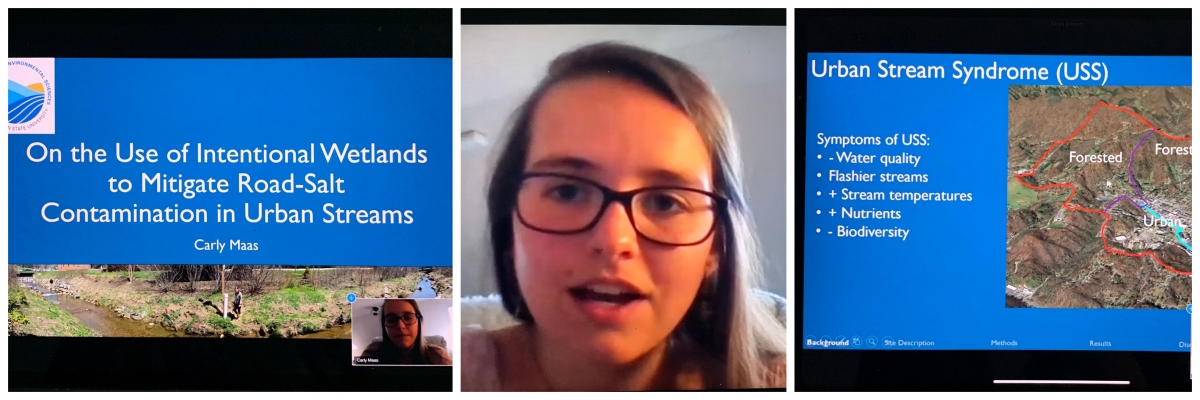
Allison Dombrowski’s presentation summarized her work for the past three and half years, on stable strontium isotope analysis as part of the DAGGER (Devonian Anoxia, Geochemistry, Geochronology and Extinction Research) project. Allison went on the National Geographic and Explorers Club Flag Expedition in July/August 2018 to Mongolia with Dr. Carmichael and the rest of the DAGGER team. Since then, she has been analyzing samples they recovered to determine how trace elements in ash help to determine changes in paleoenvironment. Her presentation was titled "Expressions of Late Devonian Bioevents in the CAOB- New Data from the Samnuuruul Formation, Southwestern Mongolia."
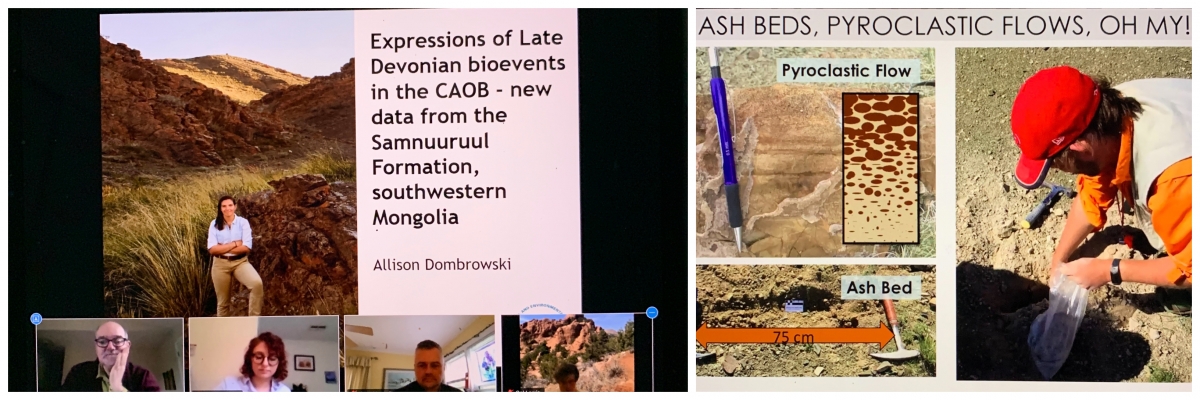
Emma Myrick followed with her presentation on “Multi-Scale Analyses of Eolian Influence on Buried Cultural Horizons in the Sandhills, North Carolina,” wrapping up her career at AppState with a double major in Geology and Sustainable Development. Most of Emma’s work was in environmental geology and geoarchaeology, working with Dr. Cowan and Keith Seramur. In this presentation, Emma used sampled soil and did microanalysis of quartz grains to investigate wind transport as a mechanism of site burial, and how this could help archaeologists by providing stratigraphic evidence that their artifacts have been preserved in a cultural context.
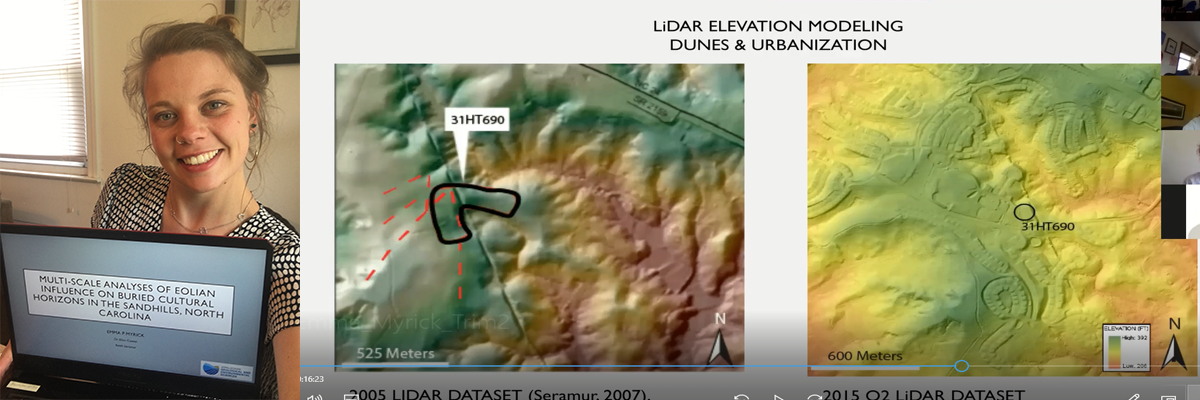
Delaney Ryan, a Geology major with a concentration in Paleontology, wrapped up the day with her presentation titled “Establishment and Application of New Quantitative Methods for Analyzing Rhynchonelliformea: An Exploratory Study of the Morphology of Cincinnatian Brachiopoda during Richmondian Invasion.” Delaney worked with Dr. Hageman and has established a new approach for carrying out standardized methods for analysis of brachiopod morphology.

We want to congratulate all the presenters for a job well done and thank everyone who came into the virtual room to support them. Every session had between 30-40 attendees including current students, alumni, faculty and family members. We’re all looking forward to seeing what’s next in store for these accomplished seniors.
For the list of all videos, visit the 2020 Senior Thesis Presentations page. If you would like to learn more about student research in the Department of Geological and Environmental Sciences including a list of peer-reviewed articles with students as co-authors , visit the GES Student Research and Conference Presentations page.
